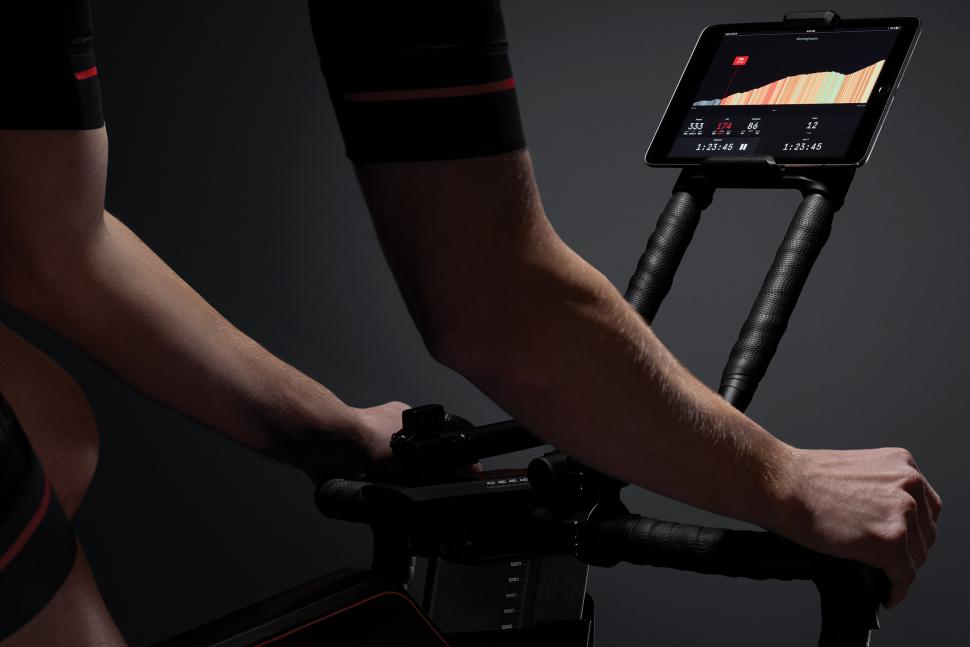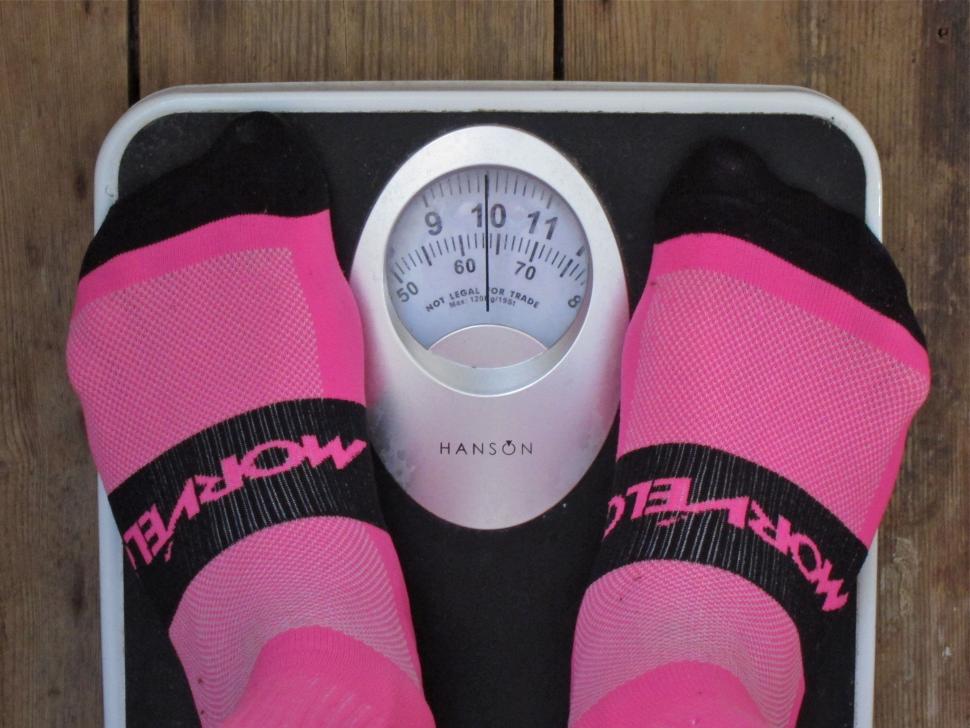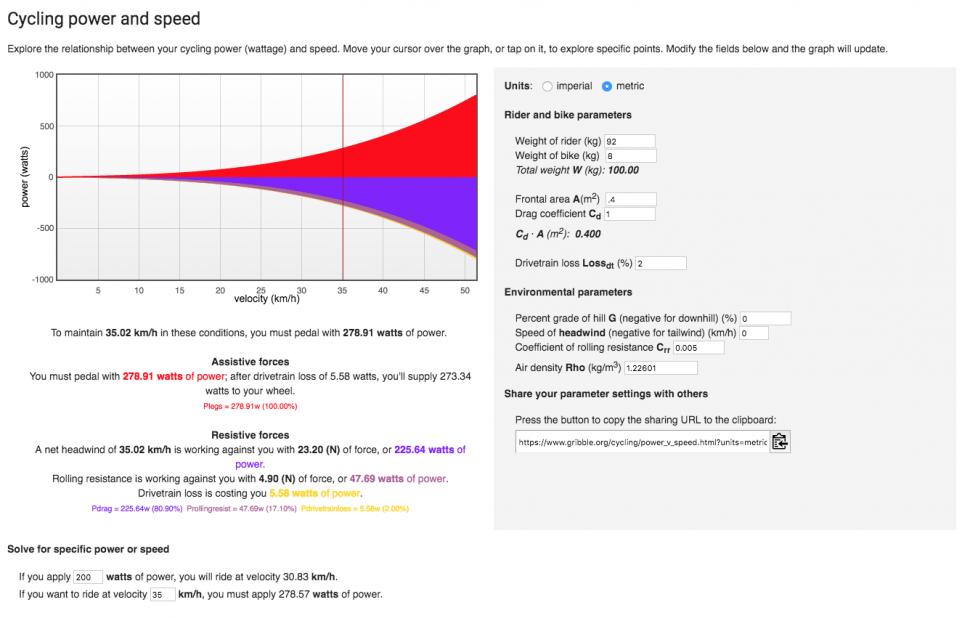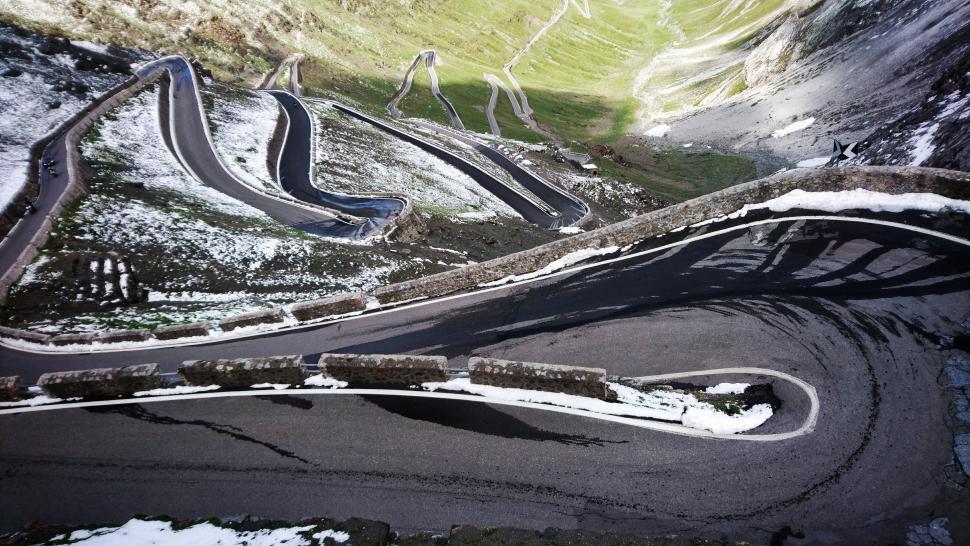- News
- Reviews
- Bikes
- Accessories
- Accessories - misc
- Computer mounts
- Bags
- Bar ends
- Bike bags & cases
- Bottle cages
- Bottles
- Cameras
- Car racks
- Child seats
- Computers
- Glasses
- GPS units
- Helmets
- Lights - front
- Lights - rear
- Lights - sets
- Locks
- Mirrors
- Mudguards
- Racks
- Pumps & CO2 inflators
- Puncture kits
- Reflectives
- Smart watches
- Stands and racks
- Trailers
- Clothing
- Components
- Bar tape & grips
- Bottom brackets
- Brake & gear cables
- Brake & STI levers
- Brake pads & spares
- Brakes
- Cassettes & freewheels
- Chains
- Chainsets & chainrings
- Derailleurs - front
- Derailleurs - rear
- Forks
- Gear levers & shifters
- Groupsets
- Handlebars & extensions
- Headsets
- Hubs
- Inner tubes
- Pedals
- Quick releases & skewers
- Saddles
- Seatposts
- Stems
- Wheels
- Tyres
- Health, fitness and nutrition
- Tools and workshop
- Miscellaneous
- Cross country mountain bikes
- Tubeless valves
- Buyers Guides
- Features
- Forum
- Recommends
- Podcast
feature
 Wattbike Atom -5.jpg
Wattbike Atom -5.jpgPower-to-weight ratio: what is W/kg, and why does it matter?
If you’ve ever read any books about professional cycling, you’ll probably have read about power-to-weight ratio: riders at the peak of their abilities killing themselves on a benchmark climb to ascertain the magic figure. And if you’ve spent any time sweating indoors with any of the current crop of training apps you may have come across it there too. So what’s it all about? And as a non-professional rider, how important is it? Read on to find out and you can watch us demonstrate what it means in the real world in our video below too.
What is power-to-weight ratio?
It’s not a clever name or anything: it’s literally just the ratio of your power to your bodyweight. It’s normally expressed in watts per kilogram (W/kg). At this point someone will normally point out in a nasal voice that the kilogram is a unit of mass, not of weight, but unless you’re doing some of your training on Earth and some on the moon, that’s not likely to be an issue, since gravity is a constant, near as dammit. Those people need to take a long, hard look at themselves. But I digress.
Your weight is, well, your weight. And the figure you use for your power output in watts is generally your functional threshold power, of FTP. That’s the power you can nominally put out for a whole hour. Most of the indoor training apps currently available will have some kind of FTP test for you to complete so you can assign yourself a number; it’s generally not much fun finding out, but it’s not complicated.
How do I measure it?
Well, you’ll need a pair of bathroom scales, but you likely already have them. And then you’ll need a bike thing that measures power. That might be a power meter on your bike or it might be an indoor trainer that can give you a repeatable number. Then you just get the one number and divide it by the other one. Easy!
What’s a good power-to-weight ratio?
Well, higher is better. I’m a pretty big rider at 92kg, and my FTP is around 315W, giving me a power-to-weight ratio of about 3.4W/kg. That’s fairly average. I’m a good enough rider to make it off the bottom rung of the racing ladder into the third cats, but I’m not exactly pulling up any trees there. It’s accepted Tour de France lore that to be in with a shout of winning the race you need to have a power-to-weight ratio approaching 6.5W/kg. So a pro rider who weighs 65kg would need to be capable of putting out over 420W for an hour. Yikes!
Does it matter?
Obviously none of us are going to win a Grand Tour, but that doesn’t mean that your power-to-weight ratio is a meaningless metric. In short: yes, it matters. It matters most when you’re going uphill, and the steeper a climb, the more it’s about your power-to-weight, which is why it’s so important in a Grand Tour: that’s where the race is usually decided. And it matters most there because you’re moving slowly.
If you’re riding a bike then you’re working all the time against certain forces that will slow you down. There’s mechanical friction: the rolling resistance of the tyres on the road, the bearings in the hubs and pedals, friction losses between cleat and pedal, that sort of thing. Then there’s wind resistance, as you push the air out of the way as you move through it. And if you’re riding uphill, you’re also working against gravity.
There’s a clever tool here where you can input numbers for all the variables* and get an idea of how many watts would be required to ride at a given speed. By working up a couple of scenarios you can see how these different forces come into play.
First, let’s assume I’m riding along on the flat, on a still day, at a reasonable speed, say 35km/h. For a 92kg rider on the hoods, the calculation suggests that about 278W of input is required to keep going at that speed. We’re assuming you’re on your own here, as drafting another rider makes an enormous difference; we won’t go into that here!
Of that 278W, by far the biggest component is air resistance at 225W – four fifths of the total. That’s because cyclists aren’t particularly aerodynamic, and air resistance increases in a cubic relationship with velocity: if you go twice as fast, there’s eight times as much air resistance. That’s why time triallists spend so much time obsessing over their bikes and riding position. It really matters to be aero when you’re going quick.
Secondly, let’s pretend I’m grinding up a 12% hill at 8km/h. That’s also going to require me to put out 278W of power, but a lot has happened to the mix. Air resistance is almost negligible at less than 3W, but the work I’m doing against gravity to climb the hill is 260W, 93% of the total. When I’m on a steep hill, moving slowly, it’s basically all about me working against gravity. On a steep climb, it’s pretty close to being a direct relationship between the power from my legs and my speed up the climb.
It’s interesting to see how weight affects the speed of riders of different weights on the flat, and on climbs.
Take, for example, Liam and I. Liam’s a svelte 63kg and I’m almost half as much again. His FTP is lower than mine at 298W, but because he’s a lot lighter his power-to-weight is much higher at over 4.7W/kg, and he generally smokes me on the hills.
On the flat, all other things being equal, that 298W would mean that Liam was rolling along at around 36.5km/h. For my 315W I’d be able to manage nearly 37km/h, because on the flat it’s more to do with your absolute power than power-to weight. So even though my W/kg number is lower, I could theoretically go a bit faster. If I managed to gap him, I might be able to pull away.
However, on our 12% climb I’m dead in the water: my 315W buys me about 9km/h, and Liam’s up at nearly 12km/h, over 30% faster than me. The climbs are where it matters, and the steeper they are, the more it’s about power-to-weight.
What can I do to get better?
If you want to go faster, then there are two things you can do. You can put out more power, or you can reduce the amount of mass that’s working against gravity, either by losing weight or spunking a huge wad of cash on a really, really light bike. It’s worth pointing out here that for mortals like us, your power-to-weight using your whole system weight – you and the bike – is sometimes more meaningful, because you can realistically save weight on your bike too. For professional riders, everyone’s on a UCI-limit 6.8kg bike (or near enough), so it’s not really a variable. If you’re a hillclimber, and you can shed a couple of kilos by sawing bits off and drilling holes in things**, that can make a significant difference to your time up a climb.
For an average rider, though, most of the easy gains are with you, not the bike. You can make an effort to lose weight, and you can embark on a training programme to increase the power you can put out. In reality those two things often go hand in hand: as you spend more time training, your weight often decreases. When I was originally training to race my weight dropped by around 10kg, and my FTP increased from about 280W to over 300W. Those kind of gains just aren’t available by swapping your wheels for a set of nicer ones. Not everyone has 10kg to shed, but there’s usually something that could go…
It’s not all about power-to-weight though
A final thought: your numbers can take you so far, and in some disciplines – time trialling, individual track pursuits – they’re very important, but a lot of the time it’s one factor in among many others. Pacing – knowing how hard you can push for how long – is vital in a range of situations.
Take a sportive; if you’re fit enough to get round in three hours but you go off much too hard from the start and blow up spectacularly halfway, then it might take you four, or you might end up being sick in a hedge and never make it to the finish, not that I’d know what that was like.
If you’re in a crit race then it doesn’t matter if your power-to-weight numbers are the highest of the whole field if you’re in 20th place coming out of the final bend for the sprint: you’re not going to cross the line first. Racecraft and tactics are a huge part of doing well in that discipline. Then there’s nutrition, and your technique, and conditioning, and peaking at the right time... The list goes on. Power-to-weight is a useful thing to know, but it’s not the be-all and end-all of riding your bike.
*The figures I used were:
Frontal area A: 0.4 and coefficient of drag Cd: 1 (from https://www.cyclingpowerlab.com/CyclingAerodynamics.aspx)
Coefficient of rolling resistance Crr 0.005 and air density Rho 1.22601 (both default figures)
**This is not recommended
Dave is a founding father of road.cc, having previously worked on Cycling Plus and What Mountain Bike magazines back in the day. He also writes about e-bikes for our sister publication ebiketips. He's won three mountain bike bog snorkelling World Championships, and races at the back of the third cats.
Latest Comments
- Doctor Fegg 33 min 53 sec ago
Ah, British Cycling and the UCI. It's hard to think of two more universally beloved organisations. Thames Water and the National Rifle Association...
- Tom_77 44 min 53 sec ago
I blame the voters. They knew (or should have known) what they were getting.
- David9694 1 hour 10 min ago
Car hits stone wall and overturns in smash outside Wiltshire pub...
- chrisonabike 1 hour 44 min ago
Yes ... and people buy what's on sale. (You might have to look harder for something smaller)....
- wtjs 2 hours 5 min ago
We get these 'high action rate' claims all the time, with little or no evidence of what the action was. People are, of course, entitled to consider...
- Bungle_52 2 hours 19 min ago
Thank you. Can't say I've ever seen one but I will keep a lookout in future.
- chrisonabike 2 hours 21 min ago
Part of me hopes they don't waste the money. If past performance is any guide poor resurfacing (particularly around utility access points), "works...
- SimoninSpalding 4 hours 53 min ago
I have Cors N:ext on my summer bike, mainly because they do a 24mm, 25 is REALLY tight on rear brake clearance. I am not impressed with how the...
- chrisonabike 5 hours 55 min ago
However, the highway code revisions now provide more detail and the cyclist overtaking picture has been updated. e.g.:...
- eburtthebike 6 hours 42 min ago
And they were right. It says something about our society that people are prepared to put so much money and effort into opposing something as...



Add new comment
17 comments
Air resistance goes up with the square of velocity. The power required to overcome this air resistance increases with the cube.
So what you're saying is that too much time on the sofa watching TV gameshows will make cycling harder?
As with all measures, it is your choice how much you choose that it is meaningful to you
I never race and so my w/kg doesn't matter, but that being said I LOVE focussing on my w/kg. It encourages me to both push myself a bit more and to try and reduce my weight, both of which make me feel better about myself, and I would say, strongly correlate with being healthy.
Annoyingly though, I've been trying to improve it for a few months and it's not moving 🤪
Power to weight has nothing to do with fitness.
Its just a marker to compare a lightweight rider against a heavier rider. The larger number means they will climb a long hill faster.
The bigger rider could be just as fit
(And I’m only saying this because I used to have a proper job as an aerodynamicist ) the actual relationship between velocity and form drag is a square power relationship, not cubic. Those drag values still go large pretty quickly though!
) the actual relationship between velocity and form drag is a square power relationship, not cubic. Those drag values still go large pretty quickly though!
Seems like the mental health system has failed Xena much like it did Arthur Fleck in Joker. Either that or the 'roids have kicked in.
What about a persons natural athletic ability and talent. Spend all your time looking at fucking computers ,listening to dickwatts who tell you what is and what is not possible . Try thinking for yourself . I used to be a bodybuilder so when i got on my first race bike a seaco cannondale team bike I had no idea what I was doing . So I went to some climbs near me in north London . I did not know how to change smoothly on to the small ring so I stayed in the big ring , which was simple and easier and was the same size teeth as my courier bike 53 t . So I would go as fast as I could up these hills . Once it got easier I then went onto a smaller cog I.e. like putting more weight on the bench press or squat rack . So that’s how I have basically trained for over 10 years . I climb on my big ring like most people climb on their small ring . I have rode alp d huez , madone. Etc etc all quite easily and comfortable in my big ring usually on the euro mountains I’d be on the 21 , 24 . 27 teeth depending on how long or steep the climb is . It’s not a boast it’s just the way I taught myself , I’ve been training ,riding that way since I had a fucking bike . I am quite built for a cyclist , I still lift weights but I don’t do 3 / 4 hour rides . It’s not my thing , I like about 1 - 2 hours . Short intense and go home . my usual routes last around a hour . That’s it . But it works for me and what I want from riding a bike . 100 miles on a bike for me is just torture it’s boredom. I’ve done it and i don’t see the point I’m not getting paid for it . I do things because I like to do them . Life is to short .
i did a climb in lucca last October which was fucking insane percentage for around three km 18 - 20 percent , and I was grinding like a muthur , at my limits. could have done with a 29 or even a 32 .
Think for your self. . Push your self don’t look at a computer instead try learning what your body is capable of doing. Tech is all about doing something a certain way . Look some of the fastest runners in the world (Micheal Johnson for instance )run in a style that any coach would just go “ no no no “ but they have special talent and single minded determination. So throw your computers away get on your bike ride hard ride fast and push your body hard . It can take it stop taking advice from a bunch of pixels . When Contador rode away from the sky boys all those times he was not looking at his fuckng stem . Pantani kicked arse because he kicked arse not because he looked at a fucking computer . Computers have been the death of grand tour racing .
On another topic , go see the jocker , really great movie . Like movies should be made a good story great acting and no fucking CGI shit . We need more movies like this, a really decent script a very good cast and good cinematography. No more fucking space cgi shit . When is it going to end .
You tell people to think for themselves then proceed to tell them exactly how they should and shouldn't be riding, genius. And Pantani 'kicked arse' by following structured training and coaching which is massively simplified nowadays thanks to bike computers and power meters, not by riding hard and fast all the time like you suggested which will only lead to a performance plateau.
The only reason tdf riders in today's era can match the speeds of doped riders like Pantani & Armstrong is thanks to advances in technology, with new ways to measure physiological metrics which are then used to identify trends with fitness and fatigue, etc, look up Andrew Coggan. Structured training based on science gets results, riding hard all the time on based on 'feel' doesnt.
Yeah, but your bike only weighs 4kg...
I've heard some good opinions about Joker - comparisons with The King of Comedy and Taxi-Driver. I totally agree about story and acting being far more important than CGI. As a big sci-fi fan (and a self-described Dick-head), I hate the way that so many sci-fi films end up relying on CGI and end up devolving into a big chase with the bad guys chasing the good guys.
I am at an age where increasing my weight to power ratio is pretty much inevitable.
Nothing apart from death is inevitable.
Power to weight doesnt matter so much when racing in the UK as the short & steep climbs favour the superior neuromuscular power of larger riders. They can easily build up the momentum to power up the hills and then eat the smaller guys alive on the descents & flats. The terrain in the UK resembles that of the classics races like Paris-Roubaix etc, look at the guys who dominated those events, e.g Sagan, Cancellara & Boonen to name a few. Pure climbers are disadvantaged over rolling terrain as the climbs simply arent long enough to give them an advantage over larger puncheurs.
Speaking as a 3rd cat 59kg rider with a 4.6 w/kg FTP and 5.7 w/kg 5 minute power I'm usually clinging on for dear life during road races behind the larger riders.
That is true where a climb is 30secs, where bigger guys can power over bumps, put a 2-5min climb and a lightweight should get a very decent gap. I find upto 3-4% im still competitive, but 6%+ and I'm dropped
Power to weight is just a curiosity to me really. I don’t much care about it. I’m more concerned about power at cadence figures. If I get that wrong ( especially on an endurance type ride ) I’ll be in trouble. I have been once or twice. If you’re an ‘aspiring pro’ or have aspirations of cat 2, I’m sure it’s useful to you though.
Depends on the terrain, but ultimately a lightweight rider with a decent power to weight ratio beats a heavy powerful rider overall.
Says a 95kg rider.
I can only beat my lightweight buddies over flat courses-and not by much at all. I had a Zwift race(London figure 8) with my buddies (meet up event) I was able to hang with the faster guys(younger and lighter) all the way to Boxhill where they left me for dead. One slightly slower lightweight rider caught and overtook me halfway up boxhill. He put 40 secs into me at the crest, I was able to reduce that lead to 4 seconds by my added weight on the downhill and flat sections. The lead riders won the event by nearly 2 mins and all that was gained on Boxhill.
Same for club runs, generally stay with pack for most of ride, but we always go over lumpy section near the end. I and few other bigger guys always get dropped by a minute or two and never get it back.
You're lucky: the lumpy bit on our chaingang route is right at the start